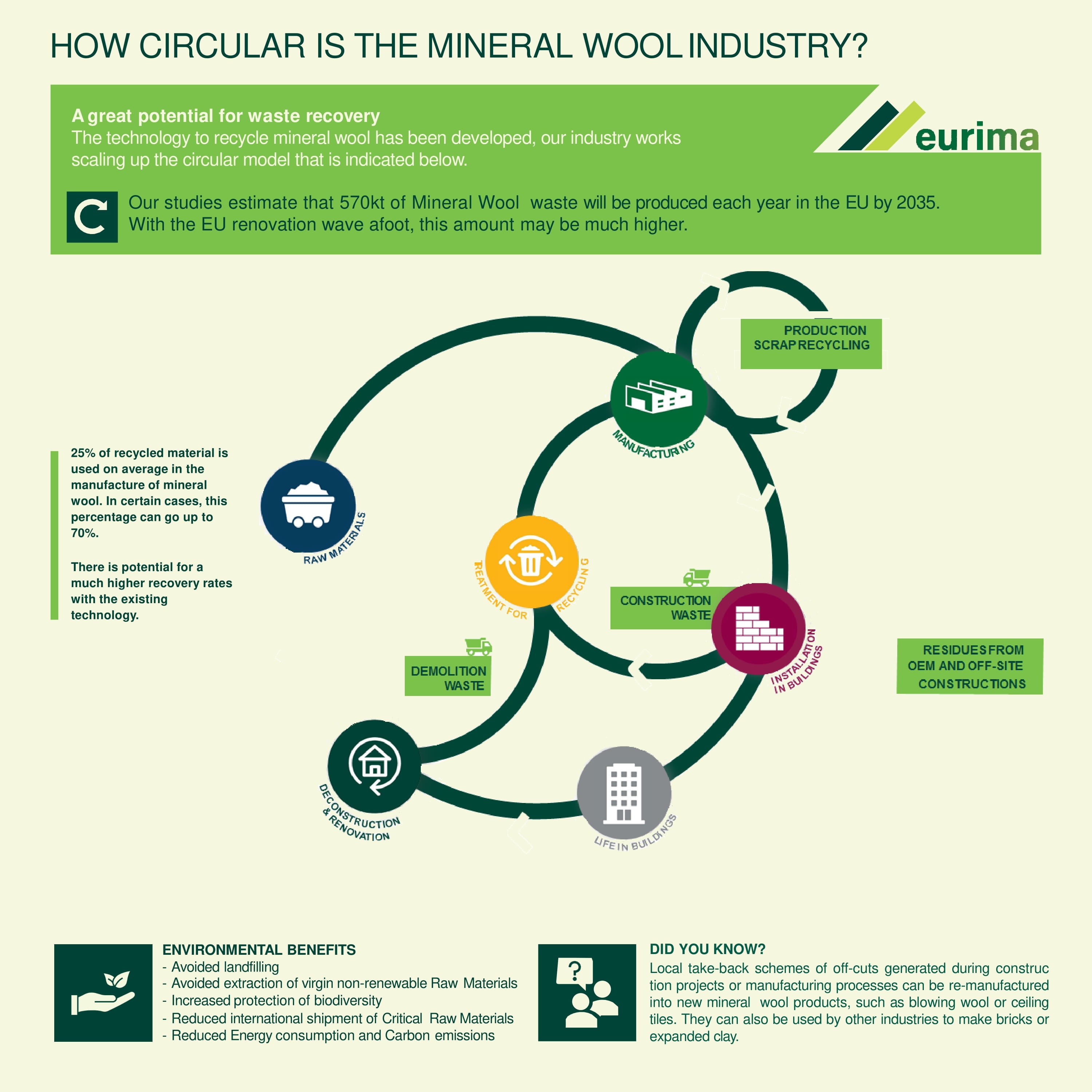Tackling waste and increasing circularity
The construction sector is responsible for about half of globally extracted materials, whereas construction and demolition account for approximately 25-30% of waste generated in the EU.
From a circular economy perspective, the sector offers great opportunities for improving in resource efficiency and material recycling and reuse.
The mineral wool industry has a longstanding tradition of promoting circular production processes. For more than 30 years, industrial symbiosis is a common practice through the use of cullet from the glass and flat glass businesses but also the use of blast furnace slag for the manufacturing of rock and slag wool insulation products. This considerably reduces the need for primary raw materials, as well as CO2 emissions, thanks to less carbonated raw materials and a reduction of the energy consumption.
For many decades, mineral wool manufacturers have developed and improved recycling solutions for most of their production residues in closed loops. through the furnace or through the forming – or by finding ways to recover them when a closed loop recycling was not economically or technically feasible.

In parallel, local initiatives based on take-back schemes have been developed to collect, reprocess and recover mineral wool off-cuts generated during manufacturing or construction projects. These off-cuts are often transformed into blowing wool or recycled to make new mineral wool products. Other recovery routes have also been developed, in processes to manufacture bricks and ceiling tiles.
Today’s challenge is recovering ‘post-consumer’ waste generated during renovation or demolition/deconstruction projects, to stop landfilling valuable resources and use these resources as secondary raw materials to substitute virgin non-renewable materials.
The mineral wool industry is actively working on technical solutions and supports banning landfilling for recyclable materials like mineral wool waste. An enabling regulatory framework to stimulate waste recycling is required, increasing circularity while safeguarding workers' health and safety. Our members are continuously cooperating within the value chain to address existing barriers and find solutions.

